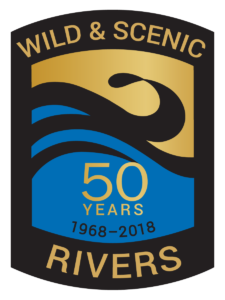50th Anniversary of Wild and Scenic Rivers Act: 1968-2018
 In 2018, America celebrates 50 years of setting aside these incredible waterways for the enjoyment of all. It started with eight rivers in 1968 and today the Wild and Scenic Rivers Act protects over 200 stretches of river in 40 states and Puerto Rico.
In 2018, America celebrates 50 years of setting aside these incredible waterways for the enjoyment of all. It started with eight rivers in 1968 and today the Wild and Scenic Rivers Act protects over 200 stretches of river in 40 states and Puerto Rico.
How did the Wild and Scenic Rivers Act Get Started?
The National Wild and Scenic Rivers Act was an outgrowth of the recommendations of a Presidential commission, the Outdoor Recreation Resources Review Commission (ORRRC). This forward-thinking commission saw that it was important to protect wild rivers and scenic rivers from development that would substantially change their wild or scenic nature. The act was sponsored by Sen. Frank Church (D-Idaho) and signed into law by President Lyndon B. Johnson on October 2, 1968. Rivers or sections of rivers may be designated by the US Congress of by the Secretary of the Interior. The eight rivers original rivers designated in the 1968 National Wild and Scenic Rivers act included the Clearwater, Eleven Point, Feather, Rio Grande, Rogue, St. Croix, Salmon and Wolf Rivers. An additional 20 more rivers were designated as “Study Rivers” for future WSR status. The Chattooga River was one of those Study Rivers.
What Does It Mean for A River to Get Wild and Scenic Designation?
A river that earns designation as a National Wild and Scenic River becomes protected against development along its banks or in the river, must be free -flowing (no dams), has limitations on the size of trips going down at any one time for numbers of boats and times between trip launches (for example only 7 rafts per trip, launched an hour apart), among other things.
Here is the actual wording of the National Wild and Scenic Rivers Act:
It is hereby declared to be the policy of the United States that certain selected rivers of the Nation which, with their immediate environments, possess outstandingly remarkable scenic, recreational, geologic, fish and wildlife, historic, cultural or other similar values, shall be preserved in free-flowing condition, and that they and their immediate environments shall be protected for the benefit and enjoyment of present and future generations. The Congress declares that the established national policy of dams and other construction at appropriate sections of the rivers of the United States needs to be complemented by a policy that would preserve other selected rivers or sections thereof in their free-flowing condition to protect the water quality of such rivers and to fulfill other vital national conservation purposes.(Wild & Scenic Rivers Act, October 2, 1968)
How Many Rivers are Protected with Wild and Scenic River Status?
Well, many people would say – Not Enough! As of 2018, according to the National Wild and Scenic River System, only 12,734 miles of rivers are protected, representing only about 0.35% of all the rivers in the United States. By comparison, as of 2011, more than 75,000 large dams across the country have modified at least 600,000 miles, or about 17%, of American rivers. Many more rivers are being studied and advocates are pushing to achieve NWSR designation for them. Be a part of this process! Learn more here.
The National Wild and Scenic Chattooga River
The Chattooga River is the only National Wild and Scenic River in Georgia and South Carolina. It received Wild and Scenic River designation in 1974. It is a prized natural resource flowing from northeast to southwest through a protected wilderness corridor for 59 miles along the Georgia/South Carolina border in the southern Appalachian Mountains.
The Chattooga River is legendary for its intense rapids and rugged scenery and abounds with untouched wilderness, incredible sights as the gorge walls rise above you, and exciting rapids full of drops and whitewater!
Learn more about the unique history in the early 1970s behind How the Chattooga River became a Wild and Scenic River.

